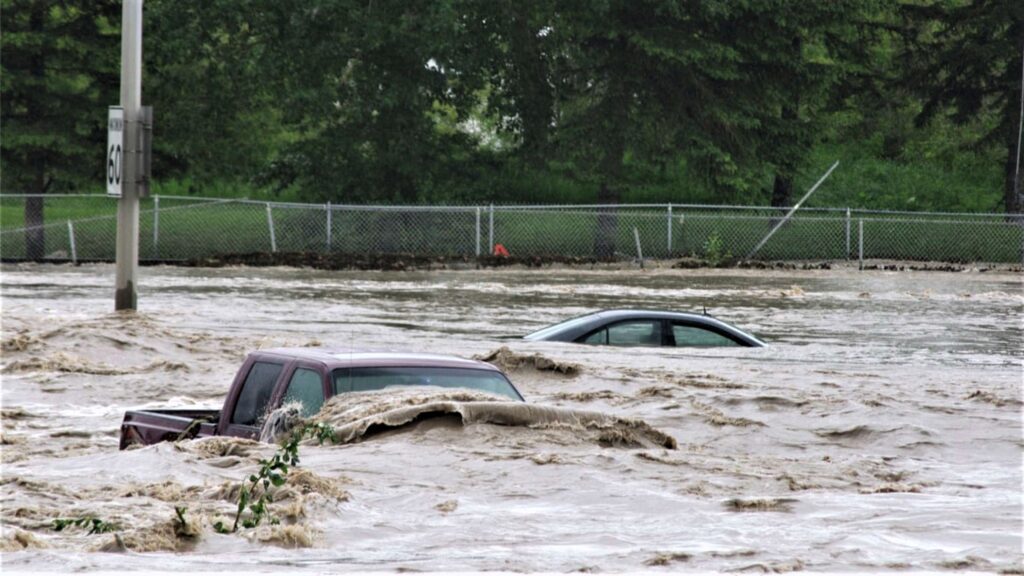Flood Damage and Insurance in Canada- Kat Technical
Home insurance for unexpected Flood Damage and disasters

Flood damage and insurance in Canada represent an urgent and complex challenge that demands collective action. As flooding becomes a more prominent threat, homeowners, insurers, and policymakers must collaborate to enhance resilience, protect communities, and ensure the well-being of Canadians in the face of rising waters. Through informed decision-making, proactive measures, and a commitment to comprehensive coverage, Canada can navigate the tumultuous waters of flooding and emerge stronger and more prepared for the challenges of the future.

Canada, known for its picturesque landscapes and diverse geography, is no stranger to the challenges posed by natural disasters. Among these, flooding stands as one of the most devastating and recurrent calamities, wreaking havoc on homes, communities, and infrastructure. The increasing frequency and severity of floods in recent years have thrust the issue of flood damage and insurance into the spotlight, prompting a crucial examination of how Canadians can protect their properties and livelihoods against these watery onslaughts.
The Rising Tide of Floods in Canada: A Growing Threat
Floods have historically been a part of Canada’s natural environment, caused by a combination of factors including heavy rainfall, snowmelt, ice jams, and coastal storm surges. However, the changing climate has exacerbated these events, leading to more intense and frequent flooding across the country. Warmer temperatures accelerate snowmelt, increased rainfall events overwhelm drainage systems, and rising sea levels heighten coastal flood risks. Regions that were once considered safe from flooding are now finding themselves vulnerable, making flood damage a pressing concern for Canadians nationwide.
The Impact of Flood Damage: Cost and Consequences
The consequences of flooding are far-reaching, affecting not only physical structures but also the well-being of individuals, families, and entire communities. Floodwaters can lead to significant property damage, erosion, and contamination, rendering homes uninhabitable and disrupting essential services. Beyond the immediate destruction, flooding can lead to long-term economic repercussions, straining government resources and hindering local development.
In the face of such challenges, adequate insurance coverage becomes a lifeline for those affected by floods, providing financial assistance to rebuild and recover.
Navigating the Flood Insurance Landscape: Understanding Policies and Coverage
In Canada, flood insurance is an essential component of safeguarding one’s property against the perils of flooding. However, it’s crucial to understand the intricacies of flood insurance policies to ensure comprehensive coverage. Unlike other types of insurance, flood coverage is not typically included in standard homeowner’s policies and must be purchased separately. There are two primary types of flood insurance in Canada:
Overland Flood Insurance:
This type of coverage protects against damage caused by water overflowing from rivers, lakes, and other bodies of water. It is designed to address the increasing risks associated with heavy rainfall and rising water levels.
Sewer Backup Coverage:
While not strictly flood insurance, this coverage is often bundled with overland flood insurance and protects against damage caused by water backing up into the home through sewers or drains.
The Role of Government and Regulations
Recognizing the urgency of the situation, the Canadian government has taken steps to address the challenges of flood damage and insurance. The National Disaster Mitigation Program, for instance, aims to reduce the impacts of natural disasters through investments in risk assessments, infrastructure improvements, and public education.
Moreover, regulatory bodies and insurers are working collaboratively to improve flood risk mapping and establish more accurate assessment tools. These initiatives are essential for creating a comprehensive understanding of flood risks, enabling better-informed decisions by homeowners and insurers alike.
The Path Forward: Building Resilience and Ensuring Protection
As climate change continues to reshape the natural world, the importance of flood insurance cannot be overstated. Canadians must recognize the evolving risks posed by flooding and take proactive steps to protect their homes and assets. This includes:
Educating Oneself:
Homeowners should make an effort to understand their flood risk by consulting flood maps and engaging with local authorities.
Investing in Flood Protection Measures:
Taking steps to mitigate flood risks, such as elevating homes, installing sump pumps, and fortifying foundations, can significantly reduce potential damage.
Exploring Insurance Options:
Researching and obtaining appropriate flood insurance coverage is crucial for ensuring financial security in the event of a flood-related disaster.
Advocating for Policy Changes:
Continued advocacy for comprehensive flood insurance coverage, along with support for sustainable urban planning and resilient infrastructure, can drive positive change at both local and national levels.
Frequently Asked Questions
What is flood damage insurance in Canada?
Flood damage insurance in Canada is a type of insurance coverage designed to protect homeowners and property owners against the financial losses caused by flooding. It provides compensation for damages to structures, belongings, and property caused by flooding events, such as heavy rainfall, river overflow, or coastal storm surges.
Is flood damage insurance mandatory in Canada?
No, flood damage insurance is not mandatory in Canada. However, due to the increasing risks of flooding, especially in certain regions, it is highly recommended that homeowners consider purchasing flood insurance to protect their properties and assets.
What does flood damage insurance typically cover?
Flood damage insurance typically covers the costs of repairing or replacing structures, such as homes and buildings, damaged by flooding. It may also cover damage to personal belongings, such as furniture and appliances. Depending on the policy, it may include coverage for cleanup and restoration expenses as well.
Are all types of flooding covered by flood insurance?
Different policies may have varying coverage options. Generally, flood insurance covers damages caused by overland flooding, such as rivers or lakes overflowing. Some policies may also include coverage for sewer backups, which can lead to indoor flooding.
Is flood insurance included in standard homeowner’s insurance?
No, flood insurance is typically not included in standard homeowner’s insurance policies. Homeowners need to purchase flood insurance as a separate policy or as an add-on to their existing coverage.
How can I determine my property’s flood risk?
You can determine your property’s flood risk by consulting flood maps provided by local authorities or government agencies. These maps outline flood-prone areas and potential risks based on factors like proximity to bodies of water, historical flood data, and topography.
Can renters get flood insurance?
Yes, renters can also purchase flood insurance to protect their personal belongings and assets in the event of a flood. This type of coverage is known as contents-only flood insurance and does not cover the structure itself.
How can I mitigate the risks of flood damage?
Homeowners can take proactive measures to reduce the risks of flood damage, such as elevating their homes, installing sump pumps, reinforcing foundations, and using flood barriers or sandbags. Properly maintaining and clearing drainage systems around the property can also help prevent flooding.
Are government assistance programs available for flood damage?
In Canada, there are government programs and initiatives aimed at disaster mitigation and recovery, including flood-related assistance. These programs may provide funding for infrastructure improvements, risk assessments, and public education to help communities better prepare for and respond to floods.
What should I consider when purchasing flood insurance?
When purchasing flood insurance, it’s important to carefully review policy terms, coverage limits, deductibles, and exclusions. Consider your property’s flood risk, your budget, and the potential value of your assets when selecting a policy. Consulting with insurance professionals can also help you make an informed decision.



